
| Stage 7 - Eurobodalla Coast (Bateman's Bay to Tuross Head) |
| Bateman's Bay to Lilli Pilli |
||
|
||
|
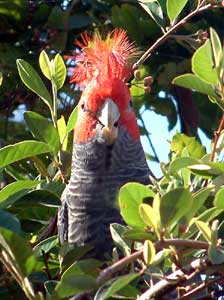 Gang-gang calls by to check out his website |
|
|
 The lifting bridge over the Clyde River is a well known South Coast landmark |
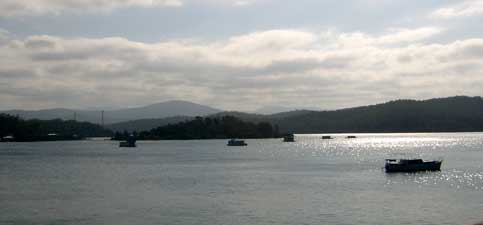 Clyde River waterscape |
 View from the Clyde River bridge toward Bateman's Bay |
|
Today's stage was relatively short, as we were heading to the coast house of our good friends, Jenny and Peter, at Lilli Pilli, a peaceful and leafy village 8km south of "The Bay". The route crossed many of the place names familiar to the fair Nello, from when she and her family took their summer holidays here over 40 years a long time ago - Batehaven, Casey's Beach, Denham's Beach, Surf Beach. As we strolled along Beach Road, she remembered when it was a quiet no-through road linking a number of isolated villages. Today it has become a noisy major thoroughfare along what is now a long unbroken stretch of suburbia. People's love for the coast has led to many moving here permanently, particularly as our baby-boomer generation has started reaching retirement age. Such is the price of progress! |
|
|
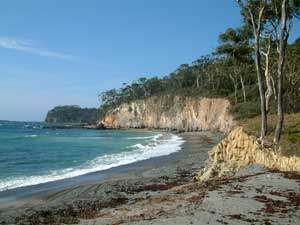 Cliffs between Surf Beach and Lilli Pilli |
|
 Looking north from the cliffs |
|
Finally we crossed Lilli Pilli Beach, a little pearl of a beach tucked away between two rocky headlands, before climbing up the hill to Peter and Jenny's place. Sitting on the deck of their house, looking at the ocean horizon through the silhouette of tall eucalypts and sipping a gin and tonic as the fragrance of frangipanis wafted up from the garden below - you can see why the South Coast is such an attraction to people living in inland cities.
|
|
 |
Lilli Pilli to Mossy Point
|
 Peaceful Garden Bay |
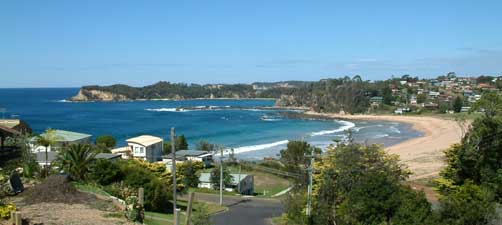 Million dollar view over Malua Bay |
 Panorama of the coast from Jimmie's Island to Mackenzie's Beach |
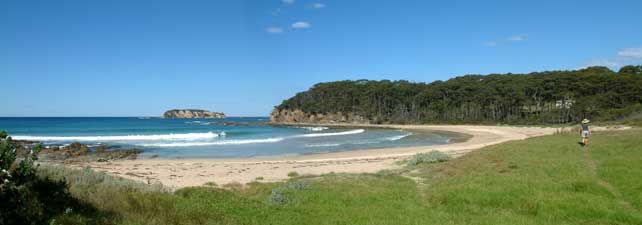 Mackenzie's Beach |
|
|
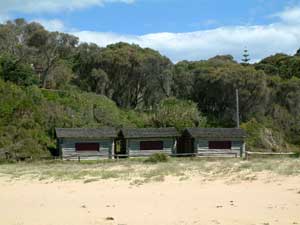 What price absolute beach frontage? These are the 3 cabins that Nicole Kidman bought for $1.5 million |
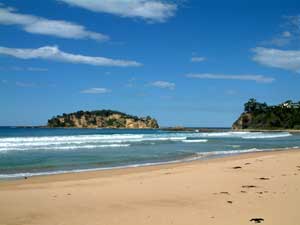 ... but then this is the view from her window! |
|
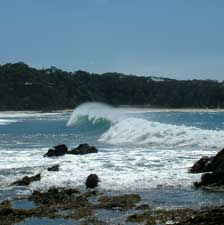 Nice wave at Rosedale |
 The track to South Rosedale Beach |
|
||
|
|
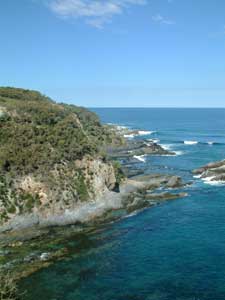 The cliffs of Burrewarra Point |
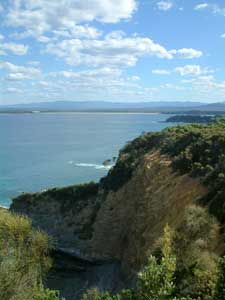 Looking south over Broulee Bay |
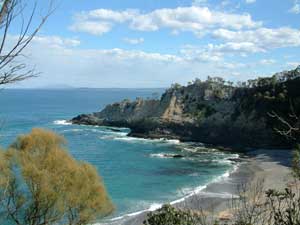 Secluded cove west of Guerilla Bay with Mount Dromedary 80 km south on the horizon |
Heading west, we followed the track inland and down into a dense thicket of casuarinas, before climbing up once more through a forest of tall spotted gums, ironbarks and burrawangs. The rapid changes in the composition, height and density of the vegetation as one moves in and out of different heathland and coastal forest habitats adds to the enjoyment of any walk on the South Coast.
|
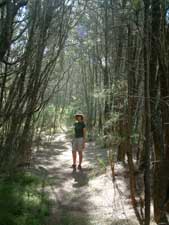 Passing through a casuarina thicket |
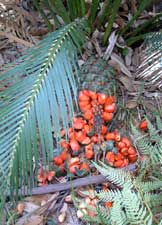 A ripe burrawang cone |
 Back amongst the tall eucalypts |
|
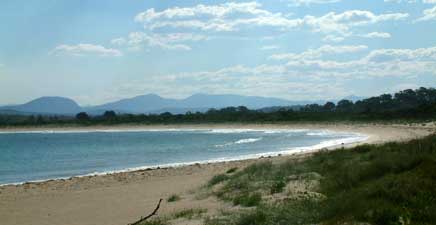 Barling's Beach |
 Crossing a paddock behind Tomakin |
 Looking south toward Mossy Point and the mouth of the Tomaga River |
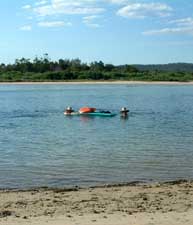 Crossing the Tomaga River |
As we were got ready to cross the river, Nello noticed a familiar figure on the other side; Sara, her sister. We were going to spend the next two nights at her partner David's coast house and she had walked to the river in the hope of meeting us. Once over, it was just a short walk for the three of us to reach the coast house at Mossy Point. The walk had been one of the most spectacular of our trip, with magnificent coastal scenery under a clear sunny sky, and what was even better was that we were thoroughly pampered by Sara for the next few days, with fine food, wine and company. Thanks for a great bit of R & R, Sara.
|
Mossy Point to Moruya Heads |
|
|
 Late afternoon at Broulee |
|
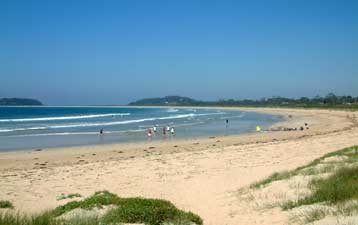 Surf's up, class is in - School kids learning to surf at Broulee |
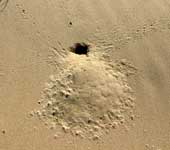 The sand crab must be the most abundant animal on our beaches and its burrows dot the sand |
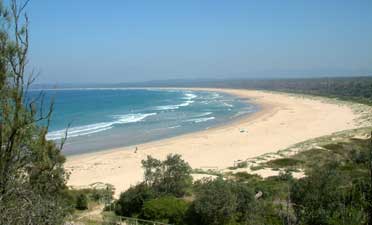 The 6 km long sweeping curve of Bengello Beach |
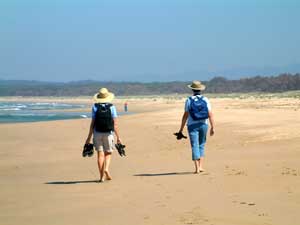 Two sisters |
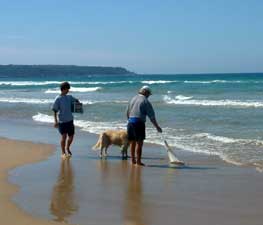 Hunting for beachworms |
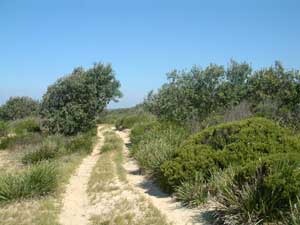 Sandy track through the dune heath |
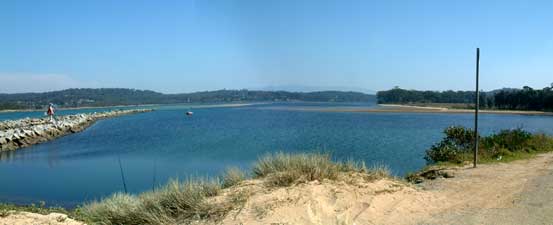 Overlooking the Moruya River |
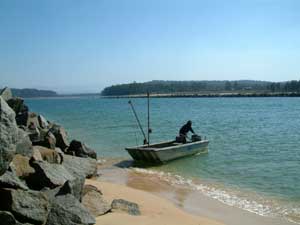 The retired oyster punt that took us over the river |
|
. |
We had had a very sociable last week. Thanks to all our friends who came down to help celebrate the fair Nello's birthday and who shared their houses and company with us. |
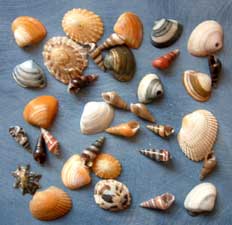 A collection of beach shells - by special request for Jules |
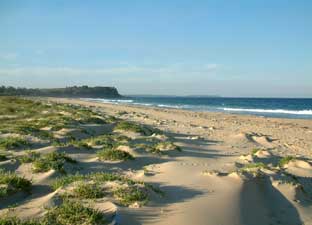 Late afternoon on Dolphin Beach |
 Sunset over the Moruya River |
Moruya Heads to Tuross Head |
|
|
 |
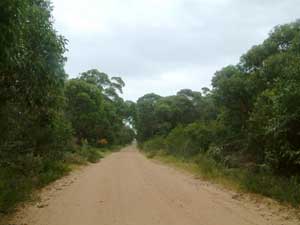 Dirt road parallelling the coast |
 Eucalypts on the left and casuarinas on the right - the changes in vegetation were quite strongly defined |
 Gnarled old banksias |
|
||
 Coast houses near Congo Creek |
|
|
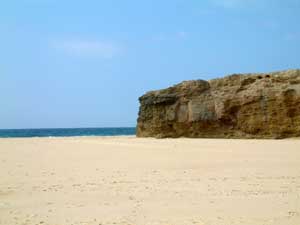 Sedimentary cliffs of Congo Point |
 Basalt cliffs 2 km south of Congo |
|
|
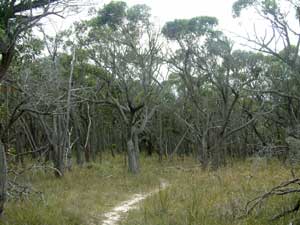 Ironbark forest |
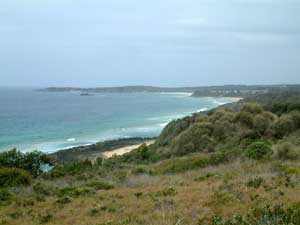 View toward Meringo from a grassy headland |
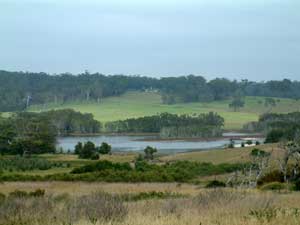 Rural landscape at Meringo |
|
 Sand bar across Meringo Creek |
 Looking north from Meringo |
 |
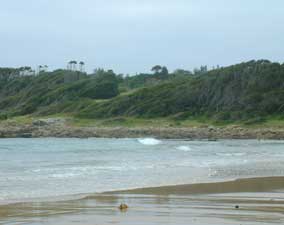 Wind-sheared vegetation on the seaward side of a headland |
Climbing up through the wind-sculpted shrubs on Mulimburra Point, we again entered a diverse and changing vegetation, low acacia heath, taller banksias, scrubby coastal mallees, casuarina thickets and clumps of paperbark, as the track threaded its way across the headland to Meringo Beach. |
 In a grassy clearing |
|
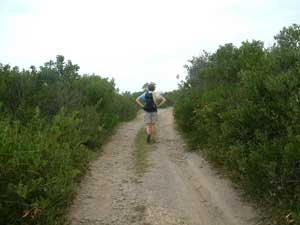 Track through the acacia heath |
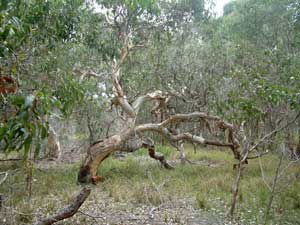 Wind-twisted coastal mallee |
|
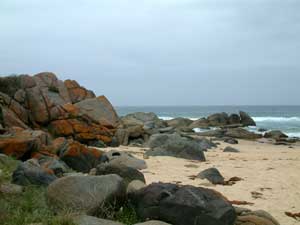 Lichen covered rocks on Meringo Beach |
|
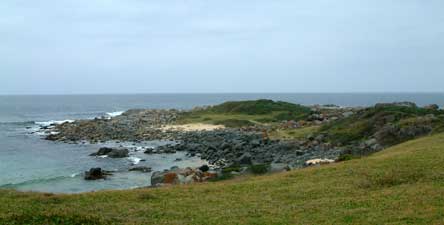 Bingie Bingie Point |
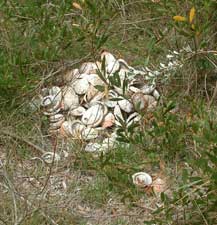 Modern day middens - the remains of an abalone poacher's picnic |
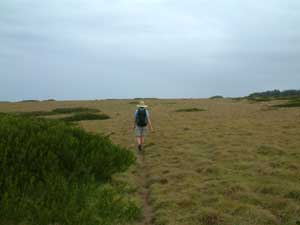 Crossing a grassy headland |
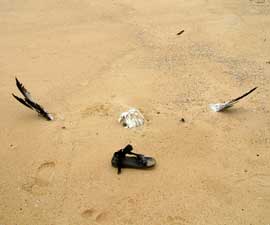 The 2.5 m wingspan of an albatross - What an ignominious end for this king of the ocean swells |
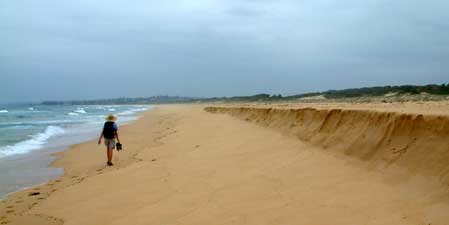 The ocean is continually reshaping beaches |
 5 km seems such a long way in the calf-burning soft sand of Bingie Beach |
|
Bleak days in Tuross
|
 Fog on Tuross Lake |
 Fisherman emerging from the fog |
 Percy and pal |
 Grey skies do not stop the avid water skier |
 Not so bleak - the sun breaks through at our waterfront cabin |
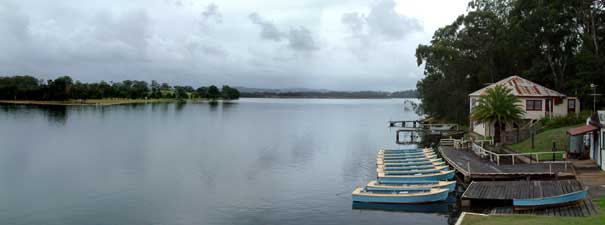 The serenity of Tuross Lake |
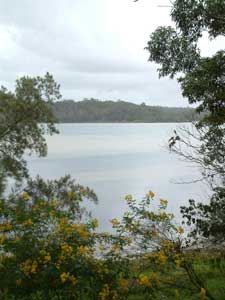 |
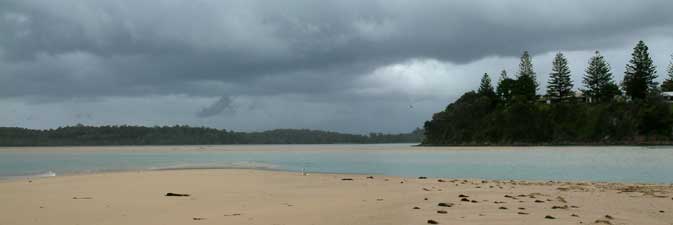 Bleak skies over Lake Tuross (for comparison with the image on the banner at the top of the page) - well done to those who had already recognised the banner image as Tuross |
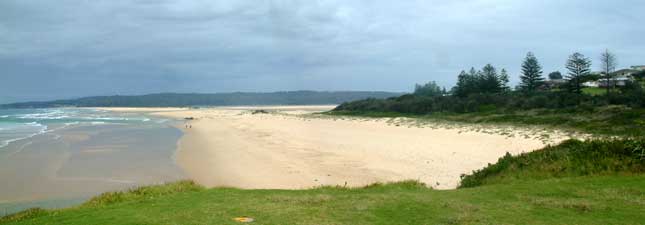 View over One Tree Beach toward the entrance of Tuross Lake |
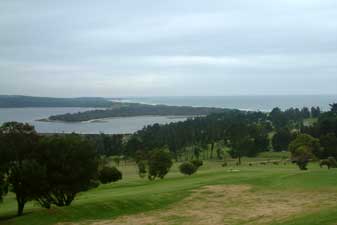 View over the golf course to Lake Coila and the ocean |
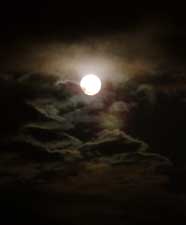 A brief glimpse of the moon between showers |
 A new species - the sea galah |
 When it rains you can always sleep on the balcony |
      |